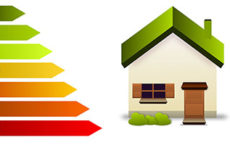Household waste is a growing problem not just here, but right across the world too. About 45% of our household waste is recycled, with the remainder either shipped abroad, sent to landfill or processed at a specialist disposal facility here in the UK. Since 2013 no waste has gone into a landfill anywhere in Suffolk thanks to the energy-from-waste incinerator at Great Blakenham, just outside Ipswich. The facility processes all of Suffolk’s non-recyclable waste and also takes around 20% of Norfolk’s as well.
A small group of employees were fortunate enough to be offered a tour of the facility to see how they operate and understand the role they play in managing household waste across the county.
The building itself has achieved an outstanding BREEAM rating, a grade achieved by only 2% of buildings assessed in this way. The large reflective panels and translucent plastic windows let plenty of natural light into the facility which also reduces the need to use electric lighting during the day.
Our tour began with an introduction from Oliver, our guide, who gave us a brief overview of the waste landscape in the UK and then on the facility itself. The incinerator produces 20MW of power which is sent directly to the national grid and is enough to power about 30,000 homes.
We toured the facility and saw the huge manually-operated ‘grabbers’ picking up vast amounts of waste and placing it in the chute ready for incineration. We saw all manners of things from black bags to mattresses and even a bicycle being picked up and disposed of.
The waste is then incinerated and the resulting ash is used as an aggregate material for the construction industry, particularly in road-building. Larger pieces of debris and metal are sorted from the ash and stored for further processing to ensure nothing in the process is wasted. The heat from the incinerator is used to drive a giant steam turbine which in turn generates electricity.
The smoke and gases produced are then channelled through a multiple-stage cleaning process which greatly reduces the levels of dangerous gases and particulates that are released from the chimney – waste products consist mostly of steam, oxygen, nitrogen and carbon dioxide, with a trace amount of pollutants which are strictly monitored by the Environment Agency on a minute-by-minute basis. This is opposed to a traditional landfill site which produces high levels of methane and other greenhouse gases, as well as being much more damaging to the natural environment.
The tour was hugely educational and it was fascinating to see what happens to our rubbish once it gets picked up by the humble bin lorry by the side of the road. While not at this stage a viable large-scale solution to solve the burgeoning waste crisis, this innovative facility is at the very least another small step forward in the fight against climate change.
More information on the Suffolk energy-from-waste facility can be found on their website.


















